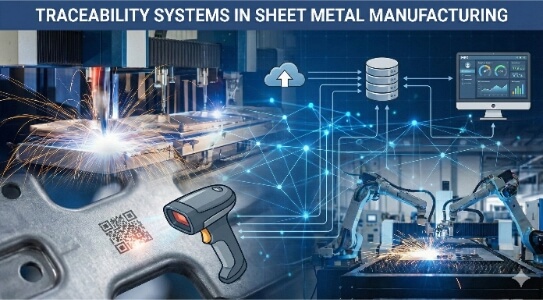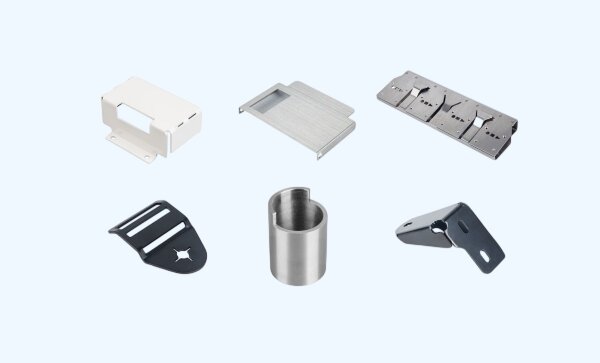Аустенитная нержавеющая сталь - это разновидность нержавеющей стали, известная своей превосходной коррозионной стойкостью и пластичностью. Она содержит хром и никель, которые придают ей уникальную кристаллическую структуру. Такая структура делает ее немагнитной и очень устойчивой к ржавчине и другим видам коррозии. Благодаря своей долговечности и универсальности она широко используется в различных отраслях промышленности.
Давайте рассмотрим важнейшие характеристики аустенитной нержавеющей стали и то, почему она может идеально подойти для ваших производственных нужд.
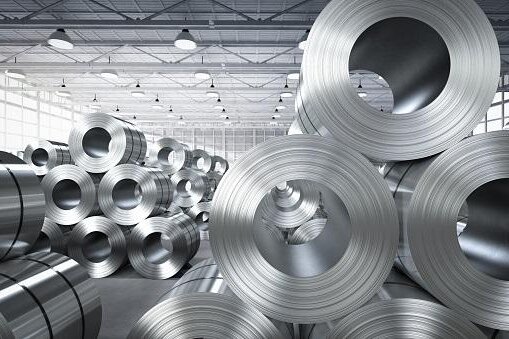
Свойства аустенитных нержавеющих сталей
Аустенитная нержавеющая сталь отличается своими уникальными свойствами, которые делают ее лучшим выбором для многих областей применения.
Кристаллическая структура аустенитных нержавеющих сталей
Название "аустенитная" происходит от ее кристаллической структуры. Эта сталь имеет гранецентрированную кубическую кристаллическую структуру, которая придает металлу характерные свойства. В отличие от некоторых других видов стали, ее структура остается стабильной при комнатной температуре.
Устойчивость к коррозии
Одной из ключевых особенностей аустенитной нержавеющей стали является ее превосходная коррозионная стойкость. На ее поверхности образуется тонкий, невидимый слой оксида хрома, который защищает металл от коррозии. Даже если поверхность поцарапана, этот защитный слой быстро восстанавливается.
Механические свойства: Прочность и пластичность
Аустенитная нержавеющая сталь обеспечивает хороший баланс прочности и гибкости. Она достаточно прочна для многих конструкционных применений и достаточно пластична для придания ей сложных форм. Такое сочетание делает ее универсальной для различных производственных процессов.
Тепловые свойства: Теплостойкость и проводимость
Этот тип стали хорошо работает в условиях высоких температур. Она сохраняет свою прочность и коррозионную стойкость даже при нагревании. Однако она обладает более низкой теплопроводностью по сравнению с другими металлами. Это свойство может быть как преимуществом, так и недостатком, в зависимости от области применения.
Магнитные свойства аустенитных нержавеющих сталей
В отличие от некоторых других видов нержавеющей стали, аустенитные марки немагнитны благодаря содержанию никеля. Эти свойства делают данную сталь идеальной для применения в тех областях, где существует опасность возникновения магнитных помех.
Распространенные типы аустенитных нержавеющих сталей
Аустенитные нержавеющие стали бывают разных марок, каждая из которых имеет уникальный состав и свойства. Две основные серии - это серия 200 и серия 300.
Серия 200
Серия 200 известна более низким содержанием никеля. Производители разработали эти марки в качестве более экономичной альтернативы серии 300. В них часть никеля заменена марганцем и азотом.
Тип 201 - популярная марка в этой серии. Она обладает хорошей прочностью и умеренной коррозионной стойкостью. Его часто можно встретить в бытовых приборах и автомобильной отделке.
Тип 202 - еще одна распространенная марка. Он обладает несколько лучшей коррозионной стойкостью, чем 201, и часто используется в оборудовании для пищевой промышленности и в архитектурных сооружениях.
Серия 300
Серия 300 - наиболее широко используемая группа аустенитных нержавеющих сталей. Эти марки содержат повышенное количество никеля, что повышает их коррозионную стойкость и пластичность.
Тип 304, часто называемый "18/8", является наиболее распространенным видом нержавеющей стали. Он содержит 18% хрома и 8% никеля. Этот универсальный сорт используется во всем - от кухонных моек до оборудования для химической обработки.
Тип 316 - еще одна популярная марка. Он содержит молибден, который повышает его устойчивость к точечной коррозии. Эта марка часто используется в морской среде и медицинских приборах.
Типы 321 и 347 - это стабилизированные марки. Они содержат титан или ниобий для предотвращения выпадения карбидов во время сварки. Эти марки часто используются в высокотемпературных приложениях.
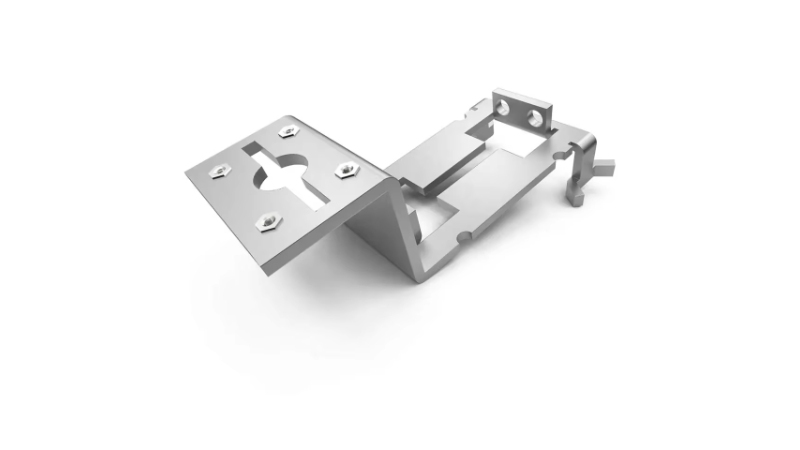
Химический состав
Уникальные свойства аустенитных нержавеющих сталей обусловлены их химическим составом, где каждый элемент играет определенную роль в характеристиках сплава.
Роль хрома в аустенитных нержавеющих сталях
Хром - главный игрок во всех нержавеющих сталях, включая аустенитные. Он образует тонкий, невидимый слой оксида хрома на поверхности стали, защищая металл от коррозии. Аустенитные нержавеющие стали обычно содержат не менее 16% хрома, а некоторые марки - до 26% для повышения коррозионной стойкости.
Значение никеля в структуре сплава
Никель играет важнейшую роль в аустенитной нержавеющей стали. Он стабилизирует аустенитную структуру при комнатной температуре, придавая стали немагнитные свойства. Никель также повышает пластичность и вязкость. Большинство аустенитных марок содержат 8-10% никеля, но некоторые могут содержать до 35%.
Содержание углерода и его влияние на аустенитные стали
Содержание углерода в аустенитной нержавеющей стали обычно поддерживается на низком уровне, менее 0,08%. Более высокое содержание углерода может привести к выпадению карбидов на границах зерен. Это явление, известное как сенсибилизация, может снизить коррозионную стойкость. Некоторые марки стали имеют более низкое содержание углерода (менее 0,03%) для предотвращения этой проблемы.
Дополнительные легирующие элементы: Марганец, молибден и титан
Другие элементы добавляются для улучшения определенных свойств. Марганец может частично заменить никель в некоторых сортах и улучшить пластичность в горячем состоянии. Молибден повышает устойчивость к точечной и щелевой коррозии. Титан или ниобий добавляют в некоторые марки для предотвращения сенсибилизации. Эти элементы называются стабилизаторами.
Производство и обработка
Аустенитные нержавеющие стали проходят различные этапы производства и обработки, которые придают материалу окончательную форму и оптимизируют его свойства.
Методы производства: Плавление и литье
Производство аустенитной нержавеющей стали начинается с плавки. Производители используют электродуговые печи для расплавления сырья, тщательно контролируя состав на этом этапе. После плавки расплавленная сталь подвергается рафинированию для удаления примесей. Затем рафинированная сталь разливается в различные формы.
Процессы горячей и холодной формовки
Горячая штамповка происходит при температуре выше точки рекристаллизации стали. Этот процесс позволяет значительно изменить форму при относительно небольшом усилии. Он используется для создания крупных структурных форм и толстых листов. Холодная штамповка происходит при комнатной температуре. Она используется для изготовления листов, полос и проволоки.
Обработка аустенитных нержавеющих сталей
Обработка аустенитной нержавеющей стали может быть сложной из-за ее склонности к жесткой обработке. Это свойство может привести к износу инструмента и повлиять на чистота поверхности. Для решения этих проблем производители используют острые инструменты и соответствующие скорости резания. Они часто используют охлаждающие жидкости для управления тепловыделением во время обработки.
Сварка аустенитных нержавеющих сталей: Лучшие практики и проблемы
Сварка является стандартным методом соединения аустенитной нержавеющей стали. Эти стали обычно обладают хорошей свариваемостью. Однако с ними связаны некоторые проблемы. Основной проблемой является возможность сенсибилизации в зоне термического влияния. Это может привести к межкристаллитной коррозии. Чтобы предотвратить это, сварщики используют низкий уровень нагрева и быстрые скорости охлаждения.
Области применения аустенитных нержавеющих сталей
Промышленное применение
- Химическое перерабатывающее оборудование
- Резервуары для хранения и трубопроводы
- Теплообменники
- Сосуды под давлением
- Оборудование для производства целлюлозы и бумаги
- Текстильное оборудование
Оборудование для производства продуктов питания и напитков
- Пивоваренные чаны
- Системы пастеризации молока
- Поверхности для приготовления пищи
- Контейнеры для хранения
- Конвейерные ленты
- Смесительные резервуары
Медицинские и хирургические инструменты
- Хирургические скальпели и щипцы
- Имплантаты (например, замена тазобедренного сустава)
- Стоматологические инструменты
- Лабораторное оборудование
- МРТ-сканеры
- Контейнеры для стерилизации
Применение в архитектуре и строительстве
- Фасады зданий
- Поручни и балюстрады
- Лифты и эскалаторы
- Кровля и облицовка
- Скульптуры и памятники
- Компоненты моста
Использование в аэрокосмической и автомобильной промышленности
- Выхлопные системы
- Крепеж и болты
- Конструктивные элементы в самолетах
- Каталитические преобразователи
- Системы впрыска топлива
- Лопатки турбины
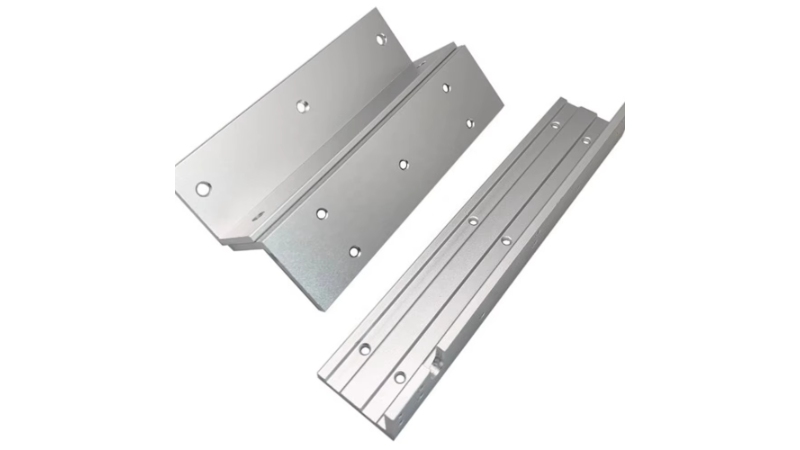
Преимущества аустенитных нержавеющих сталей
Аустенитные нержавеющие стали обладают многочисленными преимуществами. Эти преимущества делают их популярным выбором в различных отраслях промышленности.
Прочность и долговечность
Аустенитные нержавеющие стали отличаются высокой прочностью. Они противостоят коррозии во многих средах, от атмосферного воздействия до агрессивных химических веществ. Эта устойчивость приводит к длительному сроку службы. Конструкции и оборудование из этих сталей часто служат десятилетиями с минимальными разрушениями.
Простота изготовления и формуемость
Эти стали обладают высокой пластичностью. Они могут быть согнутый, растягивается, и глубокая вытяжка в сложные формы без образования трещин. Эта способность к формообразованию обеспечивает многообразие вариантов дизайна, позволяя производителям создавать сложные детали с жесткими допусками.
Низкие требования к обслуживанию
После установки аустенитные нержавеющие стали не требуют особого ухода. Их самовосстанавливающийся пассивный слой защищает от коррозии, и в большинстве сред они сохраняют свой внешний вид без специальных покрытий или обработки.
Стойкость к высоким температурам
Аустенитные сорта сохраняют свою прочность и коррозионную стойкость при повышенных температурах, что делает их идеальными для высокотемпературных применений. Они используются в печах, котлах и вытяжных системах. Некоторые марки могут выдерживать температуру до 1000°C (1832°F), сохраняя при этом структурную целостность.
Ограничения и проблемы
Хотя аустенитные нержавеющие стали обладают множеством преимуществ, у них есть и ограничения. Понимание этих проблем помогает правильно выбрать материал и применить его.
Сенсибилизация и межкристаллитная коррозия
Он возникает при образовании карбидов хрома на границах зерен. Этот процесс истощает окружающие участки хрома, снижая коррозионную стойкость. Сенсибилизация обычно происходит в диапазоне 425-870°C (800-1600°F). Она может привести к межкристаллитной коррозии, когда материал корродирует по границам зерен. Правильная термическая обработка и использование низкоуглеродистых или стабилизированных сортов стали могут смягчить эту проблему.
Уязвимости коррозионного растрескивания под напряжением (КРН)
SCC возникает при сочетании растягивающего напряжения и коррозионной среды. Это может привести к внезапному, катастрофическому разрушению. Хлоридная среда особенно опасна для этих сталей. Даже небольшое количество хлоридов может инициировать SCC при соответствующих условиях.
Потенциал упрочнения и трудности при обработке
Эти материалы быстро затвердевают при холодной обработке. Это свойство позволяет повысить прочность, но также затрудняет механическую обработку. В процессе резки материал затвердевает, что приводит к износу инструмента и плохой обработке поверхности. Для решения этих проблем механики должны использовать острые инструменты, соответствующие скорости резания и охлаждающие жидкости.
Аустенитные по сравнению с ферритными и мартенситными нержавеющими сталями
Критические различия в структуре и свойствах
Аустенитный:
- Немагнитный
- Гранецентрированная кубическая кристаллическая структура
- Высокая податливость и пластичность
- Не поддается термической обработке
Ферритная:
- Магнитный
- Кубическая структура с телесным центром
- Менее пластичны, чем аустенитные
- Не поддается термической обработке
Мартенситный:
- Магнитный
- Телесно-центрированная тетрагональная кристаллическая структура
- Самый твердый и наименее податливый из трех.
- Может быть упрочнена термической обработкой
Сравнение коррозионной стойкости
Аустенитный:
- Отличная общая коррозионная стойкость
- Лучшая производительность в хлоридных средах
- Превосходная устойчивость к точечной и щелевой коррозии
Ферритная:
- Хорошая общая коррозионная стойкость
- Менее устойчивы к точечной коррозии, чем аустенитные
- Повышенная устойчивость к коррозионному растрескиванию под напряжением
Мартенситный:
- Самая низкая коррозионная стойкость из трех
- Восприимчивость к точечной и щелевой коррозии
- Требуются защитные покрытия для агрессивных сред
Сравнение механической прочности и вязкости
Аустенитный:
- Умеренный предел текучести
- Высокая прочность на разрыв
- Отличная прочность при низких температурах
- Высокая скорость закалки
Ферритная:
- Умеренная текучесть и прочность на разрыв
- Более низкая скорость закалки по сравнению с аустенитными
- Хорошая вязкость, но меньше, чем у аустенита
Мартенситный:
- Высочайшая текучесть и прочность на разрыв
- Наименьшая пластичность и вязкость
- Хрупкий при низких температурах
Заключение
Аустенитная нержавеющая сталь - это универсальный материал с уникальными свойствами. Она обладает превосходной коррозионной стойкостью, формуемостью и долговечностью, что делает ее идеальной для применения в различных отраслях промышленности. Хотя у нее есть некоторые ограничения, правильный выбор и обработка могут смягчить большинство проблем.
Вам нужен надежный производитель деталей из листового металла? Шенген – это то место, куда стоит поехать. Мы специализируемся на лазерной резке листового металла, гибке, отделке поверхности и обработке на станках с ЧПУ. Обратитесь в Шенген Сегодня и обратитесь за помощью к профессионалам!
Часто задаваемые вопросы
В чем разница между нержавеющей сталью 304 и 316?
304 и 316 - оба аустенитные сорта, но 316 содержит молибден. Это добавление придает 316 лучшую коррозионную стойкость, особенно против хлоридов. 316 часто используется в более агрессивных средах, например, в морских условиях.
Можно ли намагнитить аустенитную нержавеющую сталь?
Аустенитная нержавеющая сталь, как правило, немагнитна. Однако холодная обработка может вызвать некоторый магнетизм. Полностью аустенитные сорта остаются немагнитными даже после холодной обработки.
Как предотвратить коррозию аустенитной нержавеющей стали?
Правильная конструкция, выбор материала и уход помогают предотвратить коррозию. Избегайте щелей, используйте материалы, соответствующие условиям эксплуатации, и регулярно очищайте поверхность. В суровых условиях может потребоваться катодная защита.
Подходит ли аустенитная нержавеющая сталь для высокотемпературных сред?
Да, многие аустенитные марки хорошо работают при высоких температурах. Они сохраняют свою прочность и коррозионную стойкость лучше, чем другие виды нержавеющей стали. Некоторые марки могут выдерживать температуру до 1000°C (1832°F).
Привет, я Кевин Ли

Последние 10 лет я занимался различными формами изготовления листового металла и делился здесь интересными идеями из своего опыта работы в различных мастерских.
Связаться

Кевин Ли
У меня более десяти лет профессионального опыта в производстве листового металла, специализирующегося на лазерной резке, гибке, сварке и методах обработки поверхности. Как технический директор Shengen, я стремлюсь решать сложные производственные задачи и внедрять инновации и качество в каждом проекте.

